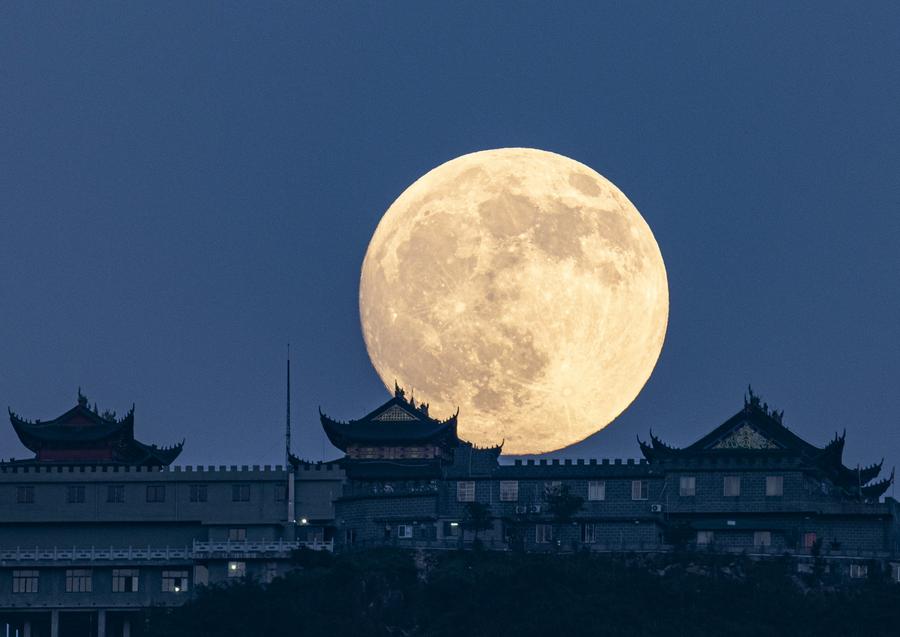 Lunar Farside Mantle Cooler Than That of Near Side: Study
Lunar Farside Mantle Cooler Than That of Near Side: Study(Yicai) Oct. 7 -- Analysis of lunar farside soil samples collected by China's Chang'e-6 lunar probe has helped scientists discover that the mantle on the far side of the moon is cooler than that on the near side.
This discovery provides the petrological and geochemical evidence for a temperature contrast between the lunar nearside and farside mantles, supplying the critical dataset needed to elucidate the moon's evolution.
The study was conducted by the Beijing Research Institute of Uranium Geology, Peking University and Shandong University, and published in the journal Nature Geoscience.
The moon is like a book recording the history of the solar system, said Li Ziying, chief scientist at the China National Nuclear Corporation, adding that the moon's mantle is the "core chapter" of this book.
Beneath the lunar crust lies the mantle, which is the moon's volumetrically dominant layer. The ancient volcanic activities on the moon were driven by the upwelling of materials from the lunar mantle. Thus, the interior structures of the moon, including the mantle, hold the decisive clues to its evolution.
The scientists analyzed the basalt samples and employed three independent thermobarometers to determine the temperature-pressure conditions under which the basalt crystallized.
Basalt from the moon's farside, collected by Chang'e-6 and dated to 2.8 billion years ago, reveals that their mantle potential temperature is about 100 degrees Celsius lower than that of the nearside basalt returned by the Chang'e-5 mission, according to the study.
Targeting nearside and farside mare basalt regions, the scientists used satellite-derived surface chemistries to calculate mantle potential temperatures, finding that the farside mantle is approximately 70 degrees Celsius cooler than its nearside counterpart.
The findings demonstrated that the lunar farside mantle was relatively colder than the nearside mantle, consistent with the hemispherical differences in crustal thickness and heat-producing element distribution. They also provide important constraints on the moon's thermal evolution and the origins of its global asymmetry.
Previous studies have revealed huge differences between the lunar nearside and farside in topography, elemental distribution and lithological character. For instance, the nearside is relatively flat, while the farside is covered with gullies, canyons and cliffs, and the terrain undulations are also greater.
The nearside of the moon has a relatively large number of lunar mare, which are flat basalt regions formed by early volcanic activities and occupy more than 30 percent of the nearside of the moon, while the farside has only about one to two percent of the lunar mare.